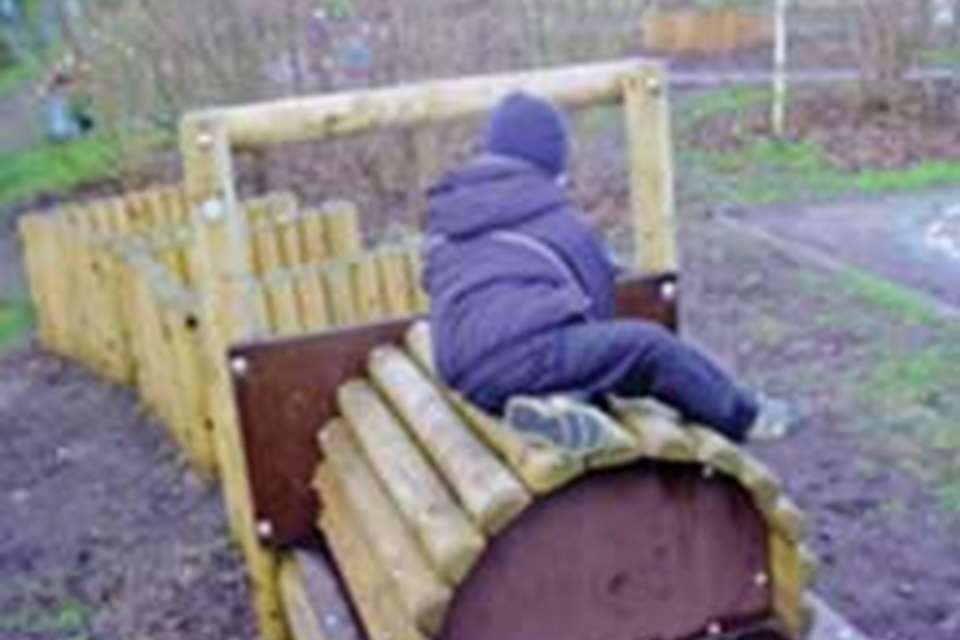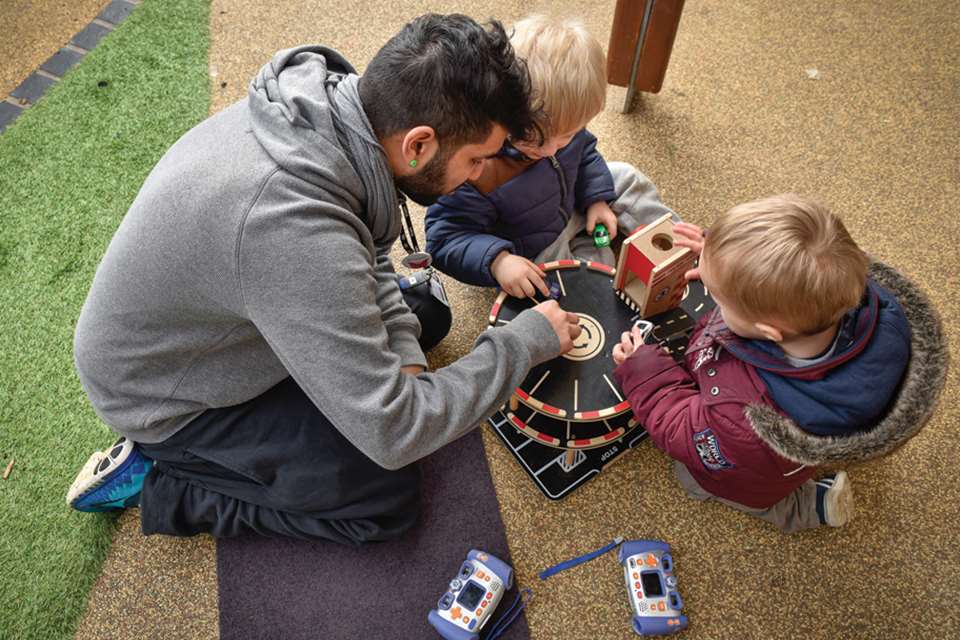Cambridge Primary Review Trust - Challenging aspects of EY practice
Dr Julian Grenier
Monday, April 6, 2015
A research paper published earlier this year has major implications for the early years because of the challenges it makes to some of the ideas that have become 'best practice', says Julian Grenier

Every now and then, a major piece of research is published which is so important that we should stop just 'doing what we do' and pause to reflect and review.
For example, over the past two decades the reports from the Effective Provision of Pre-School Education (EPPE) project have influenced almost every aspect of early years practice, from pedagogy, planning and assessment, to leadership, resourcing and buildings, all the way up to local and national government policy.
The New Zealand government's seminal review of research into provision for children up to the age of two, written by Carmen Dalli and others, prompted many of us to rethink the conventional view that the focus for children up to two should be solely on care, leaving early education until later. It strengthened too arguments against the view that lower-skilled and lower-paid practitioners might be suitable to work in baby rooms.
Now to give us pause for thought is 'Children's cognitive development and learning', a research paper from Professor Usha Goswami, director of the Centre for Neuroscience in Education. Published earlier this year, the paper is part of the Cambridge Primary Review Trust research survey, and is highly significant. Here, I will focus on just a few of the important areas of research that Goswami covers and consider the implications for early years practice.
STAGES OF THINKING
Goswami argues that the evidence no longer supports Piaget's theory that 'there are different developmental stages in learning to think'. Instead, the essence of her argument is that the infant brain is essentially the same in structure and functioning as the adult's; but, of course, the child has much less experience of the world. This means that learning - both cognitive and emotional - depends on rich experiences.
The best evidence to date now rejects the idea of any central executive part of the brain, managing what the child knows and orchestrating development. Instead, as Goswami argues, it appears that there are many 'neural networks' distributed in the brain for the learning of language, for example, or concepts about size and space.
Following this argument, Goswami proposes that 'development would consist largely of enrichment. Experiences in the child's learning environments would amplify existing connections between structures and create new connections, thereby developing novel pathways or functions via learning.'
This has some important implications for current practice in both early years and primary education. Two approaches that are popular among some early years practitioners are significantly challenged by Goswami's argument.
If learning is distributed across multiple regions of the brain, then there is no evidence to support the notion that a child would be helped by strategies that focus on just one sense. So, there is a lack of evidence to support the practice of categorising children as 'visual learners' or 'kinaesthetic learners' and planning experiences or teaching focused on that one sense. On the other hand, there is good evidence to suggest that children benefit from a multi-sensory approach to education.
Likewise, an important part of the theory behind 'schemas' in early education is not supported. Recent research does not appear to support the theory that the repetition of certain actions will support children's cognitive development from the sensory-motor stage to functional dependency and to symbolic and, finally, the abstract thought stage.
The many rich observations that early years practitioners have collected over recent decades of children repeating the same physical activities in different places (home and nursery) or using different materials (wrapping items in paper, folding themselves up in the duvet at home, etc) might now be used to develop a new theoretical approach that is consistent with wider research findings.
A CRUCIAL DIFFERENCE
While Goswami argues that the evidence suggests children learn and memorise in ways that are similar to adults, she also cites research that suggests self-control and self-regulation operate in very different ways for children. This is likely to feel familiar to anyone working with young children - every day, we experience the difficulties that some children have in inhibition if they continually snatch toys from others, for example.
Goswami explains that pretend play is a powerful way in which children experience detaching themselves from their immediate situation. For example, I was recently with a child who was exploring clay, and the child broke a piece of clay off, smoothed it into a ball and offered me a 'grape' to eat.
In order to pretend like that, the child had to, using Goswami's term, 'quarantine' her primary way of thinking about clay (slippery, grey and mouldable) for her pretend representation of a grape. This, Goswami argues, is the 'beginning of a capacity to understand cognition itself' - to understand that a thought can be an entity which is separate from real objects in the world.
She also argues that pretend play promotes children's understanding of how other people think, developing their 'theory of mind', and promotes co-operation and negotiation. To take part in pretend play, you need to be able to imagine what another person is thinking, or what their desires might be. If your friend is being the baby in the home corner, and starts to cry, the pretend play relies on you being able to understand that 'the baby is hungry' or 'the baby is tired' and respond by passing a bottle, or dummy, or blanket.
There is also evidence to suggest that imaginative play helps children to regulate their behaviour, because they are motivated by the playful scenario. If you ask a child to stand absolutely still, they may only manage to do it for a moment or two; but if you ask a group of children to pretend to be sentries on guard, standing absolutely still, they will do it for much longer. This leads to another consideration, which is that children's pretend play is more developed when they copy the pretence of others. Findings suggest that when adults model pretending with children, it can have a positive effect on play.
Pretend play is shown, therefore, to be an important factor in the development of thinking and the understanding that other people have thoughts and beliefs, the 'theory of mind'.
This reinforces the arguments of many early years practitioners that reducing the opportunities for pretend play, for example by the increased formalisation of nursery and reception classes, may have a negative impact on the child's development.
It also suggests that the practice of focusing all the adult attention on 'activities' in groups, leaving the rest of the children to play without adult modelling or support, is unlikely to be the best way to promote children's development and cognition. Pretend play is an important medium through which children develop the self- control and self-regulation that they will increasingly need through their schooling and into their adulthood.
The recent work of Denise Kingston and Professors Iram Siraj and Edward Melhuish links well with Goswami's paper; the Sustained Shared Thinking and Emotional Well-Being (SSTEW) Scale is focused on developing practice to support children's capacity to think about their thinking (metacognition), their self-regulation, and their ability to resolve conflicts.
INTELLIGENCE
The final area of Goswami's paper that I would like to highlight is about intelligence. At one time, progressive educationalists preferred to avoid the topic of whether intelligence was inherited or not, and acted as if every child had exactly the same potential intelligence, given the right environment. It is now well-evidenced that there is a strong genetic influence on intelligence.
As Goswami argues, acceptance of the findings of this research actually makes it 'even more important to provide optimal early learning environments for all children'. The reasoning behind her argument is that if all children have a good early learning environment, then the variability between children will be largely to do with the influence of inheritance on their intelligence.
However, imagine a child with developmental impairments that are genetic, and then add on the developmental impairments caused by a poor environment: your imagined child has experienced a double-impairment, and will be doubly disadvantaged when compared to a child without genetic impairments and with a good early learning environment.
The implications of the argument are that the early education system must focus on helping all parents provide a good home learning environment for their children, and ensuring that all children experience high-quality provision. The research that Goswami cites, therefore, appears to support the Sutton Trust's argument that the expansion of free nursery places for socially and economically disadvantaged two-year-olds should be slowed down, until more has been done to improve quality and consistency.
FINAL THOUGHTS
Although there is an increasing evidence base to inform the development of practice in early childhood education and care, it is still too common to find providers or trainers occupying backwaters. Piaget's theory that the structure of the child's brain is fundamentally different from the structure of the adult's is no longer credible, and nor is the theory of cognitive development from one stage to the next.
This is not to negate the huge contribution that Piaget has made, nor to underestimate the extent to which his understanding of child development is still relevant. But training or early years practice that continues to refer to children developing their thinking as they move from one level of schema to the next is no longer credible.
Similarly, there is no evidence to support the many attempts being made to reduce the time or focus on pretend play, in favour of more formal teaching in the early years. Trainers, school leaders and inspectors and others who argue for this approach are wilfully ignoring the best research evidence we have. This is an important moment for practitioners like me who are committed to the best traditions of early education and care: we need to defend strongly those aspects of our pedagogy that are well evidenced, and we need to challenge those approaches that have taken hold but which now lack credibility.
Dr Julian Grenier is headteacher at Sheringham Nursery School and Children's Centre and is a National Leader of Education
MORE INFORMATION
'Children's cognitive development and learning', from Professor Usha Goswami, director of the Centre for Neuroscience in Education, is one of several new Cambridge Primary Review Trust (CPRT) research surveys, available at: www.cprtrust.org.uk
- For more information on the Sustained Shared Thinking and Emotional Well-being (SSTEW) Scale, visit: www.nurseryworld.co.uk/ nursery-world/feature/1150435/learning-development-assessment-quality and www.ioepress.co.uk.









